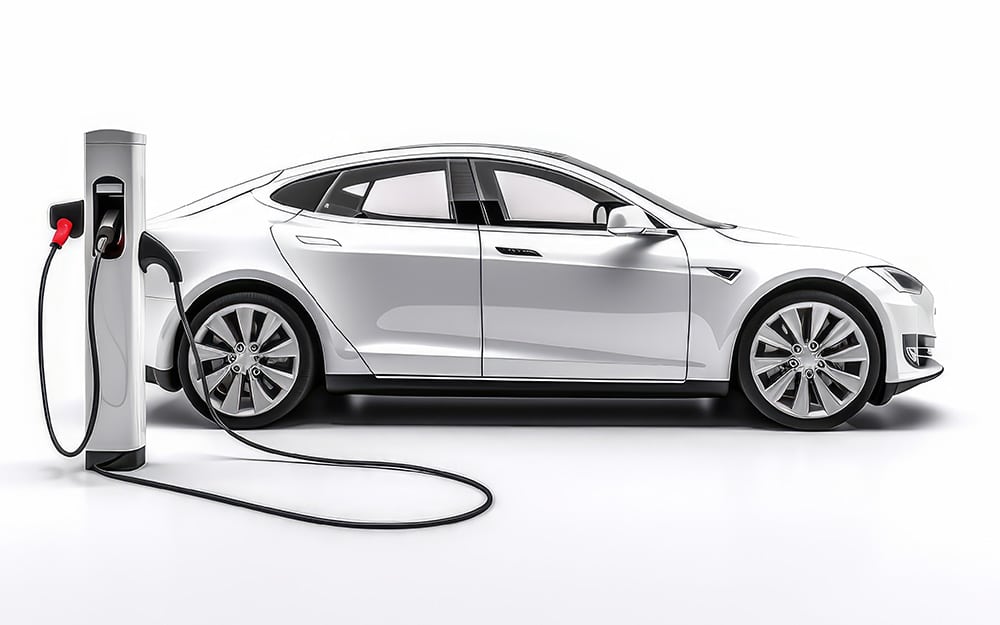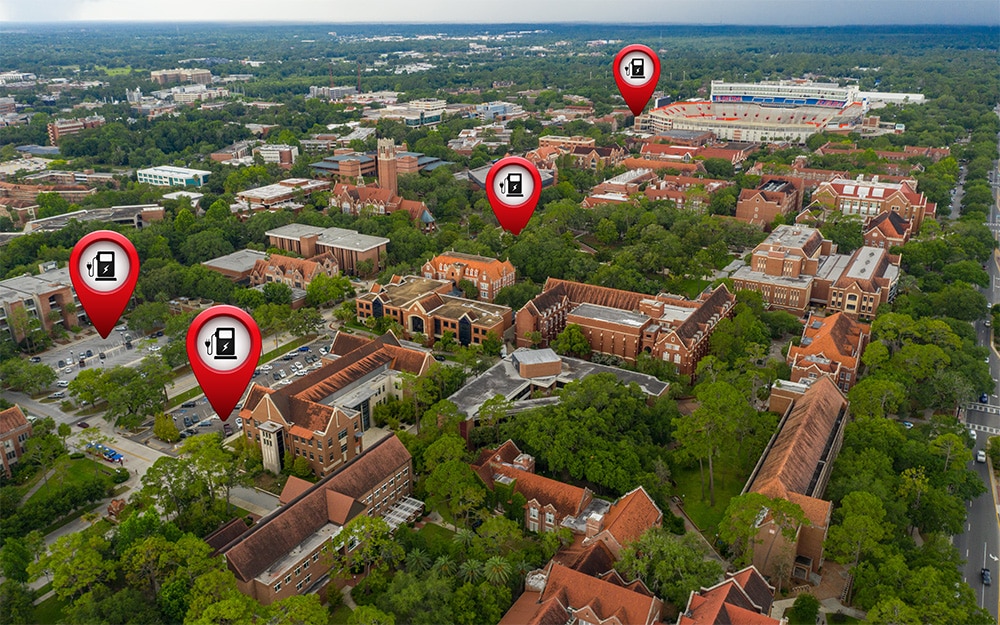Home » November 2023 » Overcoming the Electrification Challenge on Campus
The Green Impact
Overcoming the Electrification Challenge on Campus
stock.adobe.com / Felix Mizioznikov, tatianasun
Over the past year, the IPMI EV Cohort has worked to document the current status of our members on their journey towards implementation of electric vehicle support equipment (EVSE) and electrified fleet services. With the rapid intensification of funding, policies, and guidelines associated with electrification, now is the time to better define and adopt practices associated with efficient implementation of EVSE and electrified fleet services. However, that adoption is not without its own challenges and obstacles, especially in academic environments where both the provision of EVSE for patron use and electrification of fleets is critical to reaching sustainability goals set by both parking and mobility programs as well as campus leadership.
Based on the findings of the IPMI EV Cohort and the recommendations of the EV Readiness Plan, there are a few key considerations for campus parking and mobility managers to consider. Let’s start with the current state of the market.
The Current State of EVSE and EV Fleet Adoption on Academic Campuses
The IPMI EV Cohort conducted an industry-wide survey to better understand how our members were implementing, operating, and managing EVSE and EV Fleet services. Nearly 90 academic campuses across the U.S. responded to the survey, providing a rich set of data related to EV opportunities on academic campuses. The following key findings define how our academic members are approaching their electrification journey today.
- 54% of respondents felt that campus policies were supportive of EVSE and EV Fleet implementation and adoption today. These policies range from those internal to the parking and transportation operations to those from campus leadership. In subsequent conversations with campus respondents, it was apparent that while policies were supportive, they were more reactive than proactive and often left members responding to requests rather than setting the path forward.
- 60% of respondents currently have electrified components of their fleets, with most of those EV fleet vehicles in the light/medium duty category and a smaller portion using electric shuttles and fleets.
- 40% of respondents indicated that they intended to implement or expand EV fleet vehicles in the near term, but most were unsure of the timeline for expansion. For those planning to expand, most expected that expansion to include light and medium duty vehicles, with smaller percentages expecting to upgrade shuttles or buses.
- The biggest barriers to implementation or expansion of EVSE and EV Fleets on campuses included:
- The sourcing and availability of vehicles based on current market supply.
- The cost for obtaining vehicles and infrastructure is based on inflation.
- The opportunities to identify funding sources to support expansion or implementation.
- The physical site constraints needed to support expansion or implementation.
- Availability of power and utility resources to support expansion or implementation.
Overcoming the Challenges
The IPMI EV Readiness Plan outlines eight steps that are critical to preparing for and successfully implementing EVSE and EV Fleets. Those steps include:
- Establish Program Goals
- Confirm Focus Areas
- Assess Organizational Preparedness
- Conduct Utility Assessment
- Understand Market Demands
- Identify Charging Locations and Charging Types
- Develop Operations, Maintenance & Management Strategies
- Define an Implementation Process
For most of the academic respondents to the IPMI EV Readiness Survey, the first few steps are already being addressed on campuses. Whether at the parking program level or the campus leadership level, goals and focus areas are being established to support campus sustainability goals. At the programmatic level, most academic parking and transportation programs have assessed and established preparedness but are waiting on outside forces to coalesce and provide guidance, including local and state utilities and federal guidance.
With those steps in motion, some of the hardest steps for academic campuses to overcome are the specific identification of available resources, utility coordination, and identification of how to allocate limited resources. The EV Cohort reached out to several leaders in the academic parking and transportation spectrum to better understand specific challenges that are limiting the further implementation and expansion of EV resources on campuses. Their viewpoints included:
JC Porter, Arizona State University (ASU): There isn’t enough electricity currently generated to meet the lofty goals we are setting both on our campus and regionally. The California schools in the PAC-12 (rest in peace) are more concerned than most about the ability to service and charge EV fleets. Currently California gets first choice to buy EVs and they are having a tough time finding cars. Here in Arizona, it takes us a year to get an EV car and if we don’t buy it right away it gets sold out from us. On campus, we are setting infrastructure in place without adequate demand from users. Our current charger utilization is 7.21%. There are not enough electric cars that need to be charged during the day and ASU currently has 1% of permitted vehicles that come to campus that are all electric.
Gabe Mendez, University of Wisconsin (UW): Currently the vehicles we need are not available for purchase through state procurement, but we are looking at how to increase availability with our state partners. UW is currently in the midst of an EV infrastructure study to identify fleet charging areas, what would be needed to provide the electricity to those locations, and to see if we have the capacity required for the additional energy draw on campus. After completing the study, the UW will develop an electrification plan with phasing to increase our plugin EV fleet.
The goals and outcomes of each campus’ electrification journey are very much a moving target at this point. Most campuses are reacting to goals established from leadership and critical stakeholders as well as availability of local, state, and federal resources. While the intended outcome is implementing the infrastructure necessary to support EV expansion on campus, the road to get there differs based on the resources available today. That’s why it’s critically important now to define your EV readiness and develop plans to help proactively move along the electrification journey. For more information about how to do that, IPMI’s EV Readiness Plan can provide guidance as you define your path forward. ◆
Brett Wood, CAPP, PE, is President of Wood Solutions Group and Co-Chair of IPMI’s EV Readiness Cohort.
-
Brett Wood, CAPP, PEhttps://parking-mobility-magazine.org/author/brett-wood-capp-pe/December 1, 2021
-
Brett Wood, CAPP, PEhttps://parking-mobility-magazine.org/author/brett-wood-capp-pe/May 1, 2022
-
Brett Wood, CAPP, PEhttps://parking-mobility-magazine.org/author/brett-wood-capp-pe/April 3, 2024


Take a Step Back to Plan
As we navigate the complexities of the rapidly expanding EV

Electric Vehicle Charging Operations Research
Preliminary Results

Exploring the Power of Smart Parking
An Ally for a Greener Tomorrow









